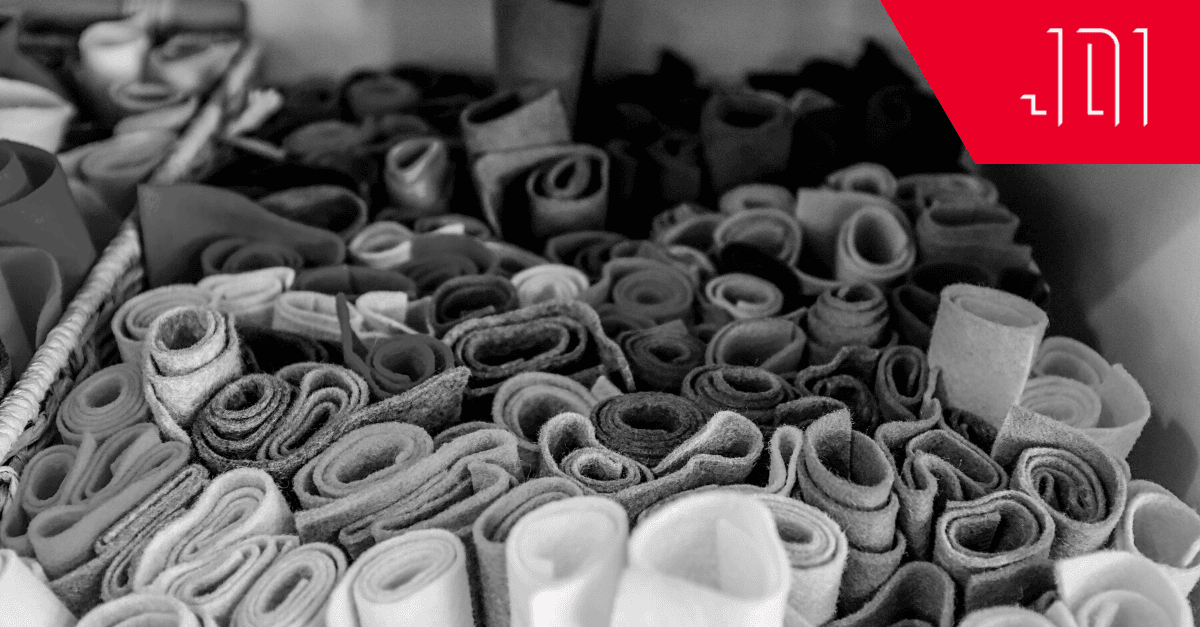Slowing Down the Textile Industry
The green energy transition has been winning big recently, capped off by the recent passage of the Inflation Reduction Act. Both public and private initiatives are solving for some of the largest sources of pollution from the energy industry and building a more sustainable future – but what will be the next major polluter to be targeted?
Just like agriculture and electricity, the fashion industry, from start to finish, is a major polluter. Every year, it accounts for 20% of the world's waste water and 10% of the global CO2 emissions. The environmental impact of the fashion industry is too high; just like with energy, we need a transition. Our current production methods need to change in order for truly sustainable fashion to catch up.
Microplastics are a Big Problem
Modern textiles rely on petrochemical products that are found in acrylics, nylons, spandex and polyester. They make our jeans stretchy or keep us cool and dry in performance wear. However, most come from virgin feedstocks of petroleum – a nonrenewable resource. These synthetic materials account for about half of the global fabric demand, with 80% of that being polyester alone.
Polyester is made from polyethylene terephthalate, more commonly known as PET, which you might recognize from plastic packaging or industrial carpet. PET is made by combining two byproducts of petroleum manufacturing ethanol and xylene. PET is commonly pressed into pellets for distribution, where they can be melted and reformed. For polyester, it is extruded and pressed into microfibers through a process called melt spinning. These fibers are then woven into larger strands, and eventually, garments.
Synthetic fibers produced from petroleum pose a significant risk to the environment beyond just their derivation from petrochemicals. Clothing that contains synthetic fibers such as polyester and nylon contributes to microplastic pollution, which will end up in the water and soil systems.
Fast fashion is responsible for 20-35% of ocean microplastics, the majority of which is generated during the manufacturing process. However, every time polyester and synthetic garments are washed, they release between 700 and 4,000 plastic fibers per gram of garment weight. These microscopic fibers are the second-largest contributing factor from the fashion industry at 35%.
Sustainable Fashion Falls Behind
In response to the environmental impact of clothing manufacturing, clothing brands and manufacturers are beginning to deliver on sustainably-produced textiles. Many of them have launched zero-carbon and biodegradable initiatives, such as Kintra. Luxury materials like leather alternatives made from mushrooms and pineapple, are currently available on the consumer market. Performance materials are slowly making their way onto shelves too – derived from biomaterials. So why aren’t we all decked out in eco-friendly, sustainably sourced and manufactured goods?
The answer lies in consumer habits. 52% of consumers want the fashion industry to follow more sustainable practices, however, only 29% of consumers would pay more for sustainably-made versions of the same items. Fast fashion’s objective is to supply clothes to consumers as quickly and cheaply as possible. By and large, consumers opt for “cheap and fast”, but rarely “good.” To deal with high demand, leaders in fast fashion have found ways to build vertical supply chains as well as sales-oriented pricing to bring products to consumers in a quicker manner.
Sustainable garments are operating on the opposite side of the spectrum from fast fashion: they push back on the plurality of consumers, opting instead for longevity and durability. Comparatively, this makes them a luxury good – a product segment that has an underlying drive of chasing the newest and hottest, skipping from one trend to the next. Garments, both sustainable and not, are built to last: but consumer usage does not match with product lifecycle.
If our habits operate in a faster-than-seasonality cycle, how can a nascent industry like sustainable fashion hope to keep up? Current fashion producers need to be more accountable for production at all stages: from source to shelves. The garment industry needs to start paying off the carbon debt it has accumulated now while sustainable fashion gets off the ground.
Cleaning up Our Act
Large-scale brands may not yet be capable of creating clothing made with completely sustainably sourced materials profitably, however, they should be taking a page out of the energy playbook and fueling a transition to sustainability. Current brands should be working to reduce waste through upcycling and repurposing older inventory. Textile manufacturers can work to implement stop-gap measures, like using recycled PET, to buy us time for sustainable textiles to scale.
Reusing materials we already have and creating something new paves the way for less material waste within the fashion community. Giving used products a new life reduces the need to use unethically sourced materials to create new products. The easiest way to handle waste in textiles is before it ever lands in consumer hands: at the beginning and end of the production journey. When textiles are made, offcuts and remnants are what is left behind, and not reused, let alone repurposed. At the end of the cycle, when finished units are left unused on shelves, there are very few retailers working to reclaim the raw materials. Upcycling, using sustainably-focused interior materials, and improving operational efficiencies will offset some of their carbon footprint, all while giving them more credibility with consumers.
A fully circular fashion industry is years away, with many hurdles to clear. Current sustainable fashion efforts often sacrifice scale for quality sourcing, materials, and bespoke manufacturing processes. The fashion industry should be looking at future-facing technologies, like NFW’s materials platform that uses plant-based and plastic free materials. Or Sorona, a company that uses Bio-PDO to manufacture sustainable apparel. It is time for the fashion industry to reevaluate its own expectations of sustainability. Just like with energy, it takes time to make this transition, and it will be a while yet before we arrive at a sustainable economy.
Consumer behavior changes can only make a small dent in the sustainable fashion industry. Clothing manufacturing has an opportunity to change the market, moving away from our fast fashion habits. Brands can – and should – respect our environment today, all while leading us towards a truly sustainable, and stylish, future.





